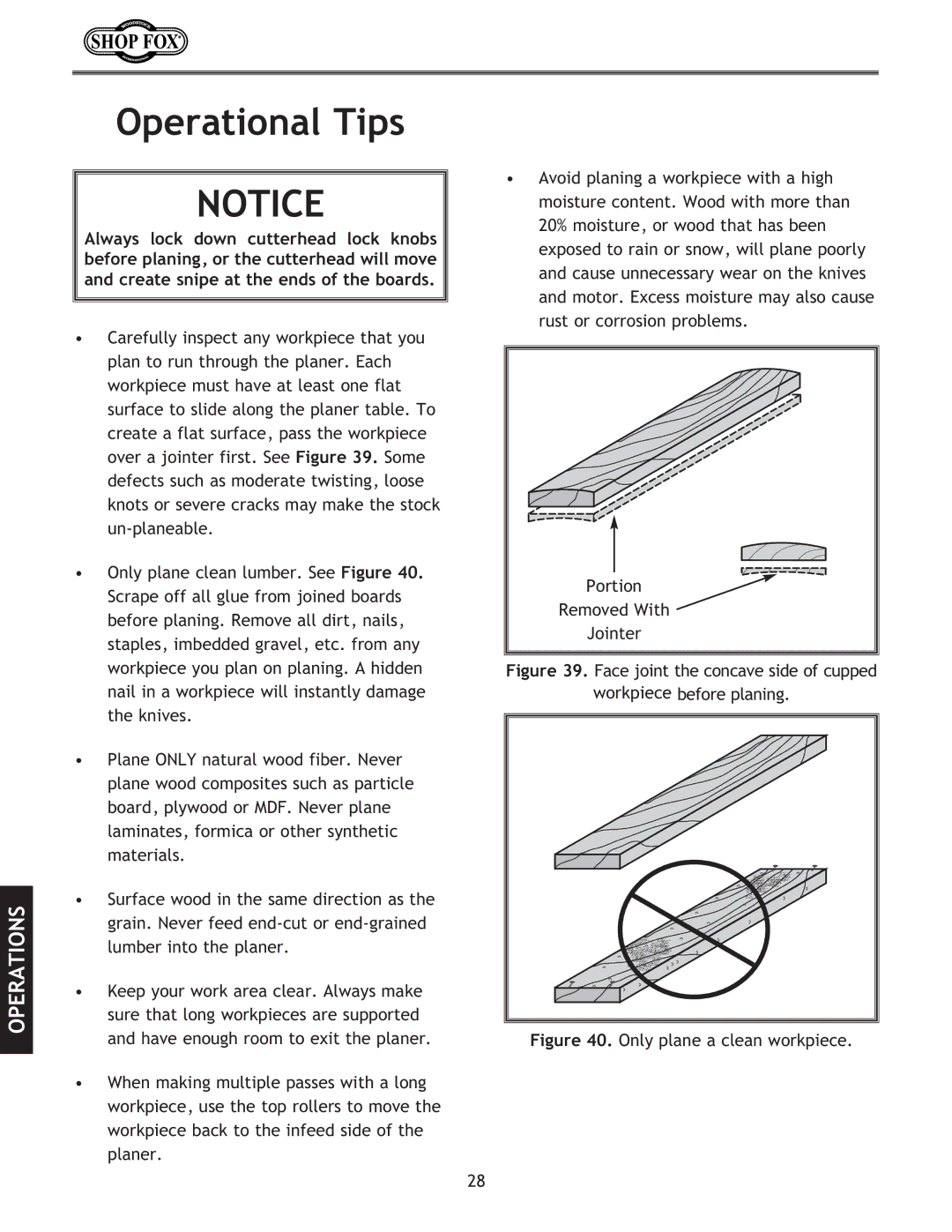
OPERATIONS
Operational Tips
NOTICE
Always lock down cutterhead lock knobs before planing, or the cutterhead will move and create snipe at the ends of the boards.
•Carefully inspect any workpiece that you plan to run through the planer. Each workpiece must have at least one flat surface to slide along the planer table. To create a flat surface, pass the workpiece over a jointer first. See Figure 39. Some defects such as moderate twisting, loose knots or severe cracks may make the stock
•Only plane clean lumber. See Figure 40. Scrape off all glue from joined boards before planing. Remove all dirt, nails, staples, imbedded gravel, etc. from any workpiece you plan on planing. A hidden nail in a workpiece will instantly damage the knives.
•Plane ONLY natural wood fiber. Never plane wood composites such as particle board, plywood or MDF. Never plane laminates, formica or other synthetic materials.
•Surface wood in the same direction as the grain. Never feed
•Keep your work area clear. Always make sure that long workpieces are supported and have enough room to exit the planer.
•When making multiple passes with a long workpiece, use the top rollers to move the workpiece back to the infeed side of the planer.
•Avoid planing a workpiece with a high moisture content. Wood with more than 20% moisture, or wood that has been exposed to rain or snow, will plane poorly and cause unnecessary wear on the knives and motor. Excess moisture may also cause rust or corrosion problems.
Portion |
Removed With |
Jointer |
Figure 39. Face joint the concave side of cupped
workpiece before planing.
Figure 40. Only plane a clean workpiece.
28
